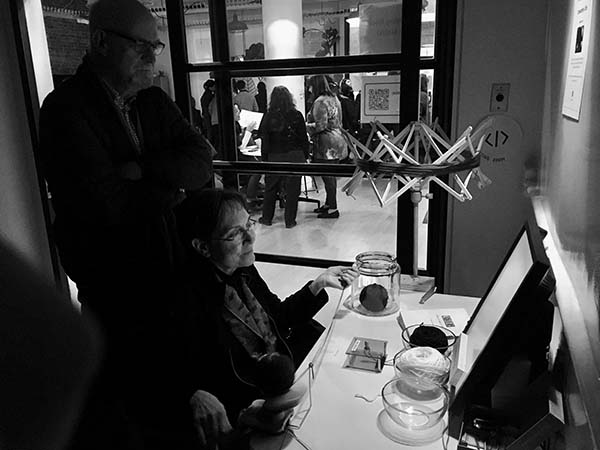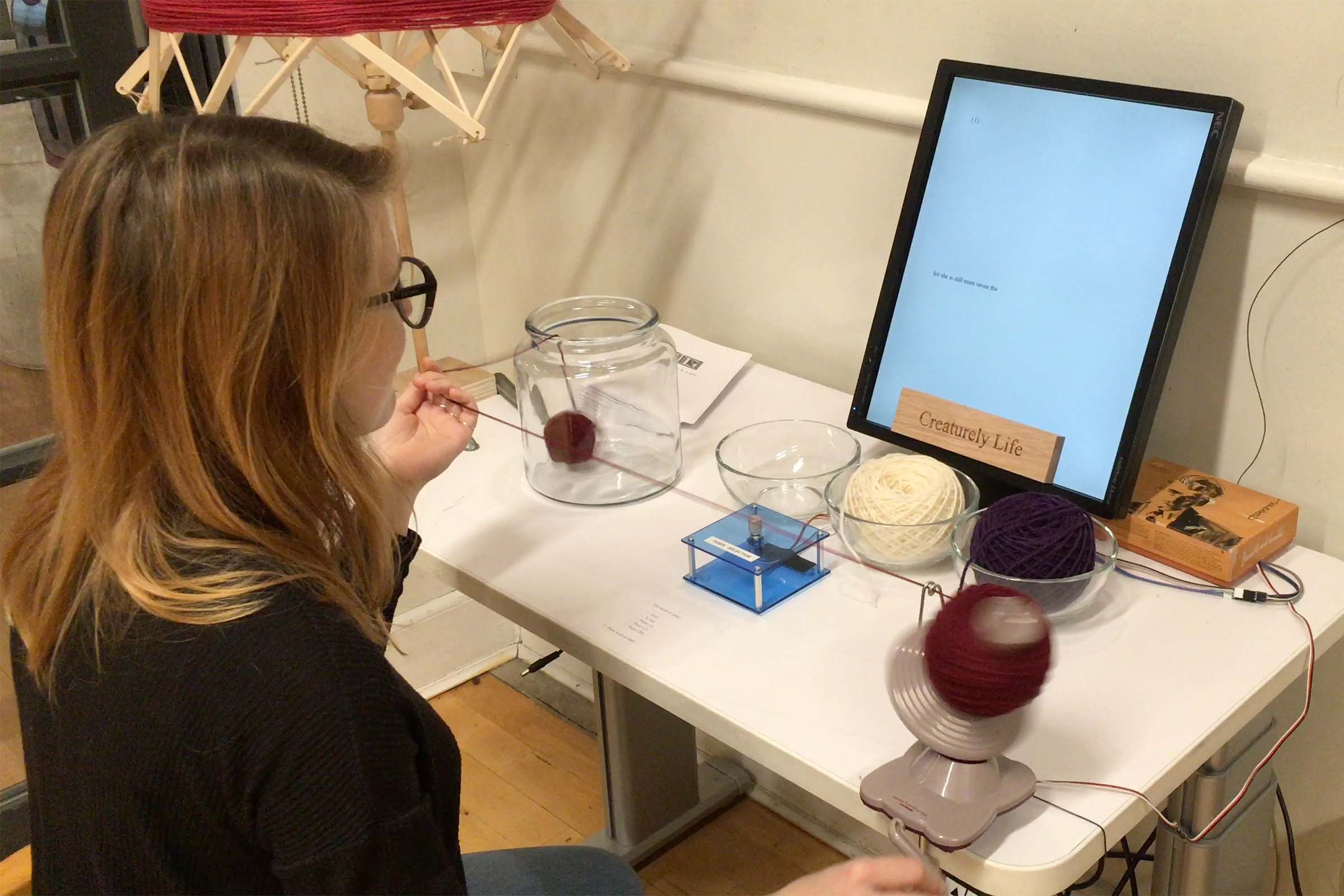Creaturely Life takes its title from a chapbook of twenty poems by Michael Joyce, written from the perspective of a woman wading through the Allhallowtide of a cherished marriage while she keeps vigil over her dying husband.
According to Lageniensis, in Ireland on Hallow-eve “young females go out at midnight, and cast a ball of yarn into the bottom of a lime-kiln, whist holding on by a thread. […] If she feel it pulled from her, she asks, “Who pulls my yarn?” when it is supposed her future husband will give his name.” Inspired by the final poem of the series in which a wife finds solace knitting beside her husband’s hospice bed, Creaturely Life offers a tangible interface through which the reader shares in the bottoming-out of loss and the unravelling of grief and love.

An installation at heart, Creaturely Life is both intimate and personal. A table, chair, and desk lamp occupy a quiet, soft-lit room. A crank-driven yarn ball winder and an umbrella swift are clamped to either side of the table. Between them sit a screen and a wide-mouth glass jar containing a single ball of yarn, one among a collection of twenty in varying sizes and colors, each corresponding to a poem in the series.
The reader sits, clasps a section of yarn lightly between her fingers, and begins turning the crank on the ball winder. Spun wool slides in a continuous stream across her fingers as evanescent fragments of poetry flit about the screen, hinting at the hidden pattern of woven language beneath. Reading and winding converge, fusing into a single experience. The ball in the glass jar jostles about, shrinking in size, and the user – much as the grieving bedside wife in the poems – draws ever closer to what knitters and sailors describe as “casting off,” when abruptly and without warning the last of the wool slips through the fingers and for the first time the poem shows itself in its entirety. Much as a life slips into memory, the original ball of yarn has transmogrified into a physical reflection of its former self, waiting to be slid off the spindle. The reader is invited to unwind another poem or stand and take their leave.
Despite advances in haptic display technologies, as readers we retain a nostalgia for the weight and texture of paper, the unmistakable sound of the turning of a page, the orderly transfer of pages from one hand to the other. One fondles the page, “feels” their way through the text in an effort to “grasp” its meaning. Creaturely Life offers an unlikely analogue to the pleasures of traditional text without resorting to web-based conventions, skeuomorphic simulacra, or meddlesome interjections prompting the reader to choose. Here, the crank evokes the passage of time, the wobbling spool spinning off-axis conjures visions of an orrery, cycles within cycles, an interface befitting poems about death and dying. A deliberate un-becoming and becoming again. The poem revealed in its entirety is the final unveiling. Not closure, but completion.
